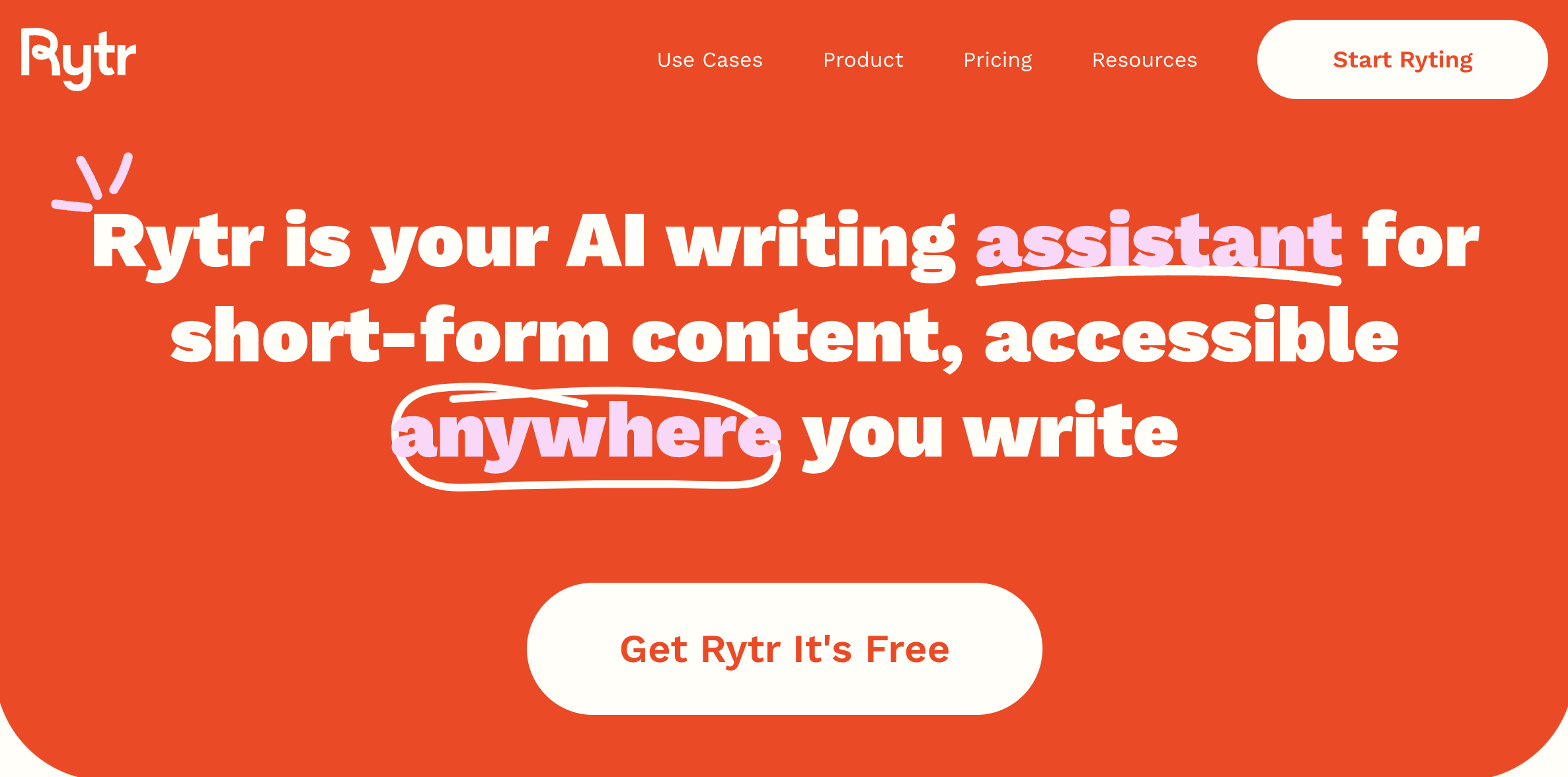
Rytr is a generative AI writing tool that promises to streamline content creation. The variety of writing templates is impressive, making it an excellent option for all types of writing needs.
Thes screenshot below shows the list of formatting options
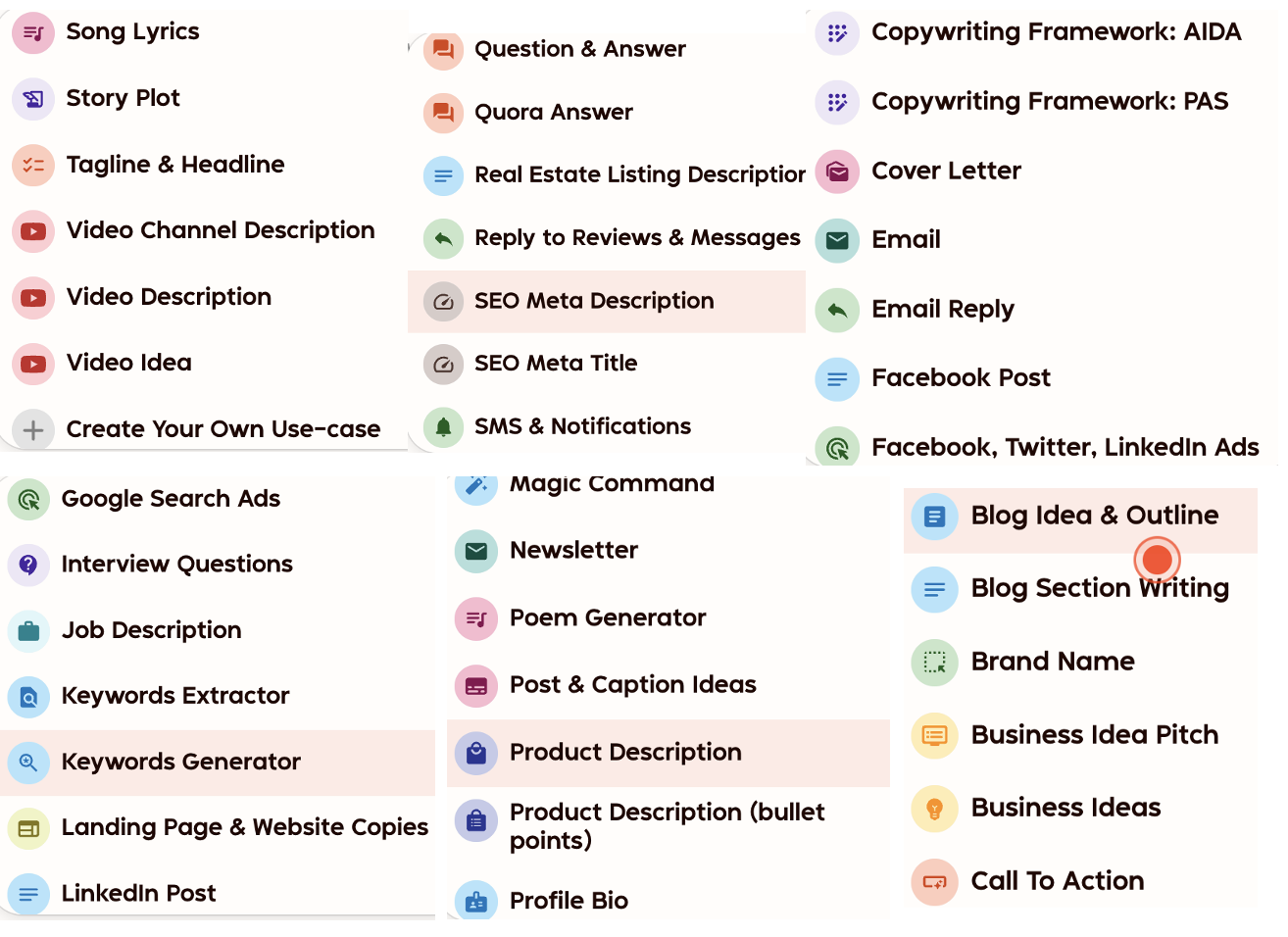
Not sure where to start, and wanting to try an option that I wouldn’t usually use, I chose Business Idea Pitch using my son’s goal of coaching younger goaltenders. In the following screenshots you can see the limited amount of information it asks for with drop down menus, such as: Language, Tone (here I chose Candid), the template or formatting required, how many Variants or options it creates, and the level of Creativity. Levels of Creativity range from none to max. When you choose Max it warns you that the message may contain false information, leading one to believe that “none” would only contain factual information. I chose another alternative, Optimal. Finally there is an open text box , max 2500 characters, to provide the messaging information. The text generated by Rytr is in blue.
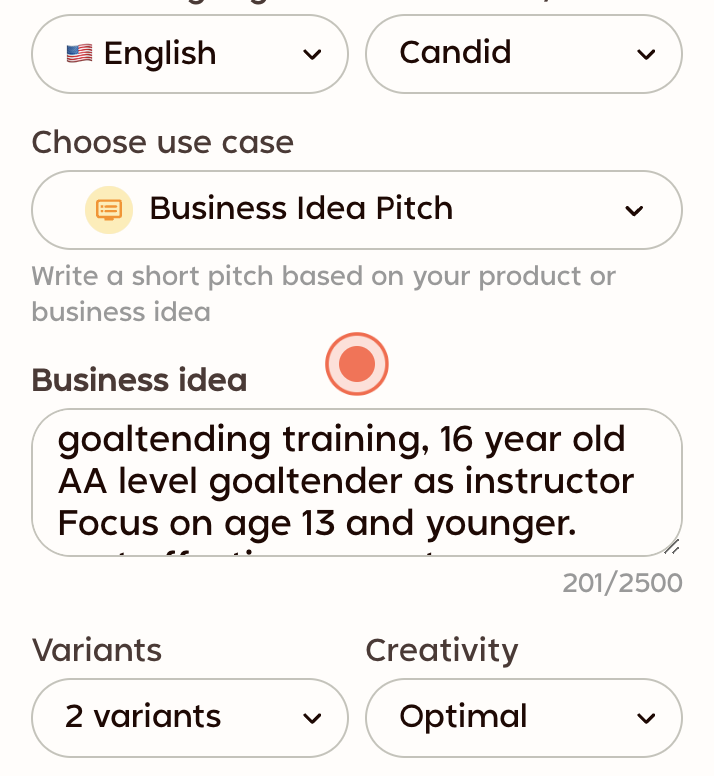
“Finding the right goaltending training for young players can be tough, especially when most instructors are far removed from the game. That’s where I come in—I’m a 16-year-old AA goaltender, and I’m passionate about teaching kids aged 13 and under the fundamentals of the position. With relatable coaching and tailored drills, I help young goalies develop their skills while having fun. Let’s elevate their game together!”
I tried one more time changing only the tone to Casual and the Creativity to Max. Again, the generative text is
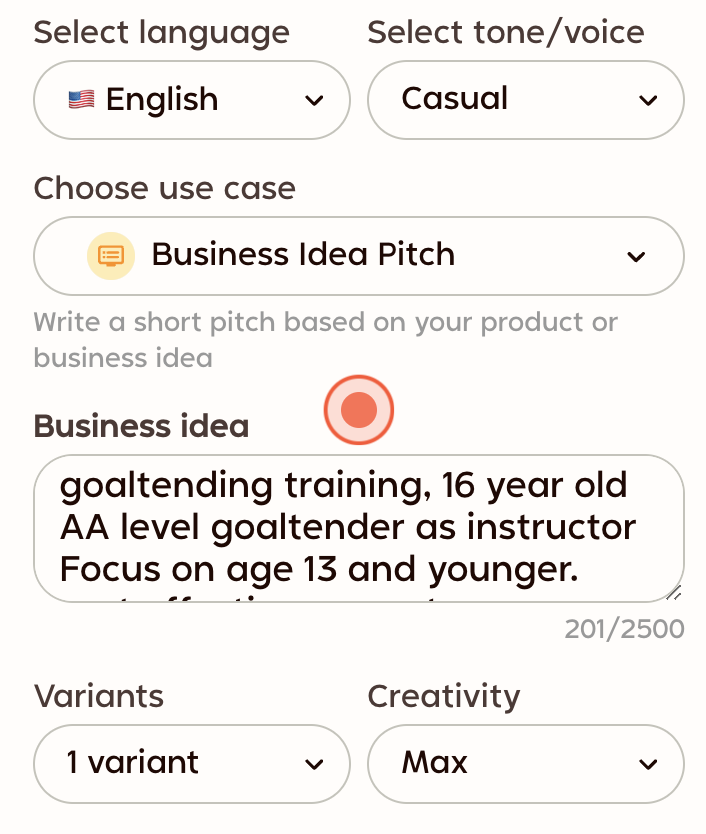
“Hey there! Got a young goalie aiming for the stars? Our goaltending training program is perfect for players 13 and under, led by a talented AA-level instructor who’s just 16 years old. We keep it fun, affordable, and super convenient by coming to your ice! Plus, we include structured video tutorials and drills that make learning easy and exciting. Let’s help them level up their game!”
I would agree that the tone is casual (Hey there!) with wider creative boundaries (the program is perfect for players….). The response rate was seconds, and that may be exaggerating. Let’s say one second.
The second template I tried was the Brand Name to find one for my son’s business venture. Rytr’s suggestions are included in the Poll below:
Not super great. Perhaps I need to work on the prompt, which was “goaltending lessons for youth led by an experienced goalie named Max. Max is a 16 year old entrepreneur”
I continued to play around with Rytr, and it was actually fun! (To clarify, it is grad class homework type fun). Super easy to use and quite responsive to changes in prompts.
While experimenting, I was mindful to look at it through the lens of an adult educator and well as K-12 (as much as I can, not being one). I do think there is a myriad of ways Rydr could be used where students would be required to use their creativity while creating prompts.
Rytr has an intuitive way of storing previous interactions which it calls Documents. It provides a history of previous prompts, as well as a traditional AI Chat space. The tone of the chat is also customizable with the same options as writing space. These spaces are presented in familiar style tabs to make navigating the site very simple.

Rytr has an additional feature called MyVoice to create profile settings to create content that sounds like the writer. More details in the screenshot below.
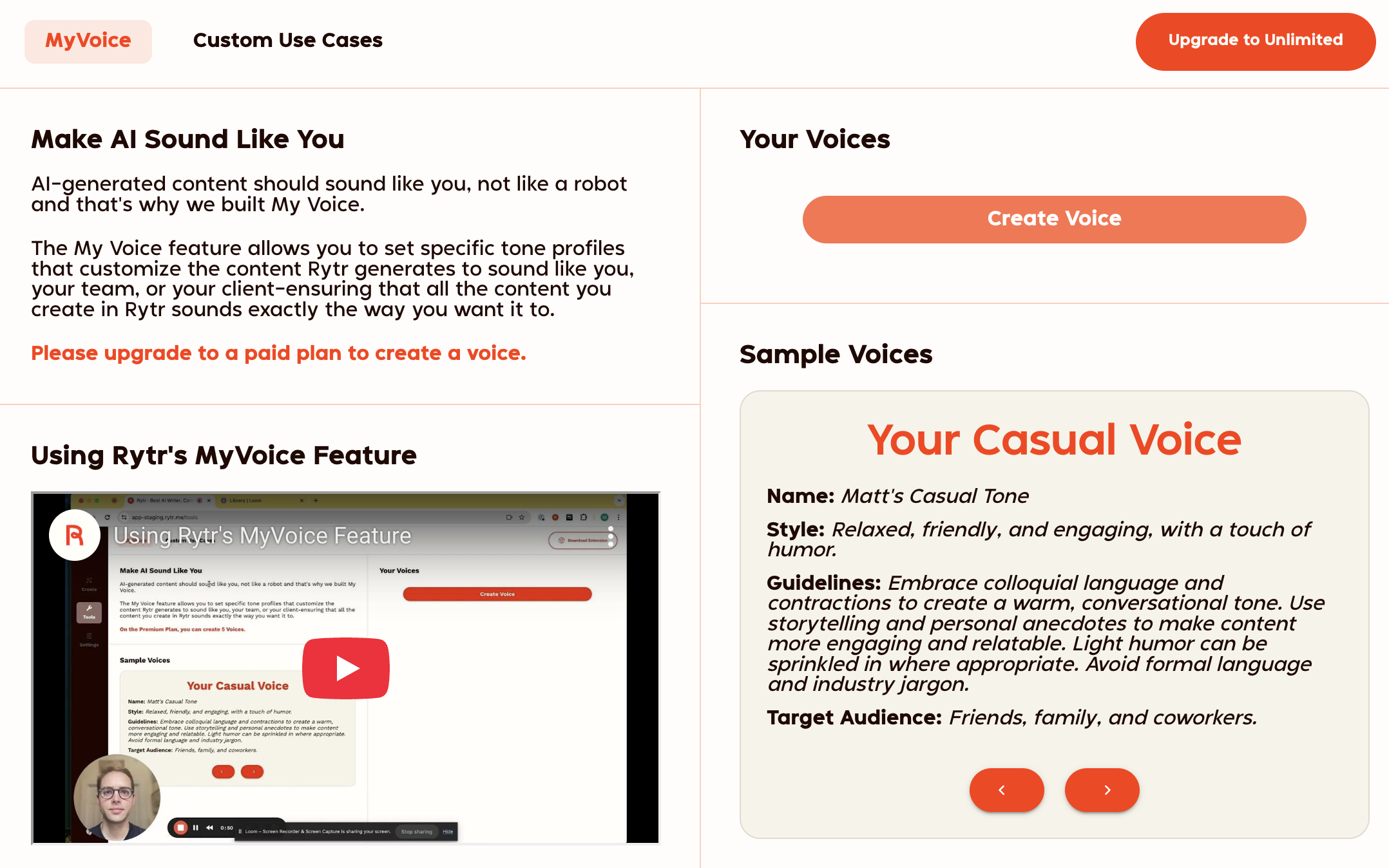
I do like that it provides more than one response at once, as well as how easy and quick it is to change the tone and creativity level. I could see this leading to assignments that compare and contrast different generated responses.
Rytr could be used to demonstrate the different writing styles that we use in our culture based on the type of messaging, ie blog post vs short story.
As teachers, I can see the variety of templates available can be used not only for creating assignments, but also help with administrative tasks.
This content generator marketed as a writing assistant has the usual challenges as other generative AI platforms, which would be true for any type of learner. These include quality (biases, hallucinations, exaggerations), academic integrity issues as well as over reliance on AI and thus losing writing and critical thinking skills. I didn’t experiment with the MyVoice feature, and if it works well, this could contribute to the academic integrity issue. The last point, over reliance on AI, seems more likely to happen with this platform as it provides an impressive amount of available formats, or templates. If one uses ChatGPT for the same task, some of this creativity would have to be included in the prompt.
As we have discussed as a class, AI tools like Rytr hold a lot of promise for enhancing education, however, it is important to integrate them thoughtfully. AI can level the playing field by providing personal support for students struggling with writing, which is important to close the learning gaps. It could also be used for challenging high-achieving students to enhance their critical thinking skills. Finding the right balance between using AI and fostering skill development is the key. Students still need to learn how to think, analyze, and write independently. Educators will play a crucial role in teaching students how to use AI responsibly and ethically, making sure it complements rather than replaces their learning experience. If AI can help lessen the administrative workload on teachers, it could theoretically allow them to focus more on engaging with students, perhaps those that require more guidance. I know some of the teachers here are already using AI for this purpose. Do you think it has increased your time available for individual students?

This was such a fun and thoughtful read! I love how you tested Rytr with your son’s business idea—what a cool and practical way to explore the tool. The pitch examples really show how much tone and creativity settings can change the feel of the message. I also appreciate your honesty about the business name suggestions… “MaxStop Academy” gave me a chuckle 😄
I hadn’t heard of the MyVoice feature before, and now I’m super curious to try it out. I agree—these tools have so much potential, but it’s all about balance. I think using AI to reduce teacher workload and give more time for one-on-one student support is such a hopeful direction. Thanks for sharing your experience in such a relatable and clear way!